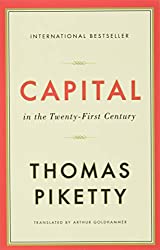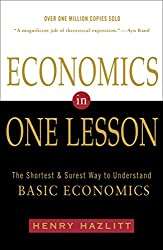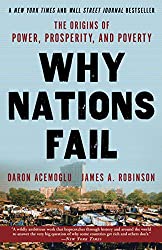
Rating: 9.8/10.
This book is about climate change in the eyes of an economist, quite an in-depth treatment about a very complex and politicized topic, and one that’s commonly misunderstood. There are two extremes: conservatives deny it altogether and environmentalists warn about impeding catastrophe. The reality is somewhere in the middle: if we don’t do anything about climate change, average surface temperature is projected to rise by 3.5C by end of the century, which will cost about 1-4% of GDP but definitely something that we can handle. However, there are large uncertainties in all the projections, and small chance that we might cross a “tipping point” that’s much more serious and irreversible. It makes sense to do something about it, particularly in areas where we can reduce emissions drastically with only a modest cost.
The book gives an overview of mitigation strategies, economics of carbon tax, and recent climate politics. After reading it, I’m a lot more informed about this topic than previously, when I only had a vague idea. This is the best book I’ve read in a while, in fact, the highest score I’ve ever given to a book so far.
Part 1: Genesis of Climate Change
Climate change is a difficult problem because unregulated free markets are bad at dealing with externalities, especially ones diluted across the world and decades into the future. Opinion on climate change vary from do-nothing to ban-all-fossil-fuels, should avoid two extremes and aim somewhere in the middle.
If nothing is done about climate change, global temperature is expected to hit 3.5C above pre-industrial levels by 2100. However, there is a lot of uncertainty among climate models in how they handle second-order effects. Particularly worrisome are tipping points, where the system changes in a catastrophic and irreversible way after a certain temperature point, like melting of polar ice caps. But these are poorly understood (exactly what temperature hits a tipping point) and adds even more uncertainty to models. Thus, every time we emit CO2, we are gambling in the climate casino.
Part 2: Impact of Climate Change on Systems
Surface temperature change isn’t too bad, what’s bad is the effects on systems and the costs. Important to study these costs so we can make good decision on how much to control climate change.
There’s an important difference between managed systems (where humans have total control, like office buildings) and unmanaged systems (where we don’t have much control, like ocean levels). Climate change will not affect managed systems much, so farming and human health will only be slightly affected.
Sea level rise will affect a bunch of countries, particularly Netherlands and Bangladesh. Hurricanes will become more intense, which will be bad for Central America. These might prompt some human resettlement, but the impacts of this will depend a lot on political structure and technology. Lastly, one of the most affected is wildlife: 25% of species might go extinct. But species loss is so disconnected from the marketplace that it’s hard to estimate the cost.
IPCC estimates 1-4% of GDP loss if there is 4C temperature increase. This is surprisingly small because much of the economy is in managed systems, which are completely unaffected. However, economic impact can be a lot bigger if a tipping point is reached, and also, some of the biggest impacts have the least obvious economic costs.
Part 3: Slowing Climate Change: Strategies and Costs
Three approaches to dealing with climate change:
- Mitigation: emit less CO2. Best plan for the long term, but expensive in the short term.
- Adaptation: adapt to the effects of climate change. Only partially effective (eg: can’t do anything about ocean acidification), so unlikely to be the sole solution.
- Geoengineering: use technology to counter global warming. This is probably feasible for countering the main warming effect, but will cause some nasty side effects, so only a last-ditch solution.
For mitigation, the most effective ways are to reduce coal use (which have disproportionately high carbon emissions) and develop more low-carbon energy sources. We can reduce emissions quite a lot with only modest cost, but costs go up exponentially as you try to cut more and more emissions. It’s crucial that all countries participate: climate targets become impossible if only half of countries participate.
Part 4: Policies for Slowing Climate Change
Copenhagen aimed for 2C target, which is a fairly arbitrary number. To determine this number, you need to do a cost-benefit analysis; under most scenarios, the U-curve is minimized somewhere between 2-4C above pre-industrial levels. However, international agreements are difficult because of prisoner’s dilemma, which is why Kyoto failed: participation was voluntary. Maybe non-compliant countries could be punished with tariffs, but this might harm free trade so it’s not ideal either.
Carbon tax is a simple and effective way of reducing carbon emissions across the board, and significantly discourages high-carbon stuff like coal, while increasing gas and electricity costs by a modest amount. Something like $25/ton of CO2 is a good starting point. An alternative is cap-and-trade, where government issues a fixed number of carbon allowances, which is then traded on the market. Both are about equally good and theoretically equivalent; in practice, carbon tax sends more consistent signals to the market, while cap-and-trade is more exact in controlling emissions. Internationally, a cap-and-trade system between countries makes the most sense.
Alternative is direct government regulation, but this usually ends up less effective than carbon tax, for example, corn-based ethanol actually produces as much emissions as gasoline. However, advantage is that they’re more politically palatable, and avoids “energy cost myopia” situation, where consumers ignore a low amount of carbon tax even though it’s irrational for their long-term financial interests.
Some people (eg: Bjorn Lomborg) hope for technological breakthrough to solve our energy problems, but this is unlikely to work in the near future because coal is so cheap. Furthermore, carbon tax will make low-carbon technologies cost-competitive and therefore spur its development.
Part 5: Climate Politics
Some people are skeptical of climate change, either claiming that it doesn’t exist, or it’s not caused by humans, or the best course of action is to do nothing. In the US, opinions on climate change is highly correlated with political views. However, an open-minded conservative should examine the scientific evidence and come to the conclusion that climate change is real, and that carbon tax is a good idea.
So far, there’s been limited traction in getting people and governments to take climate change seriously. But the scientific evidence is insurmountable, and gradually the public opinion will change, like the discovery that smoking causes cancer over several decades.



